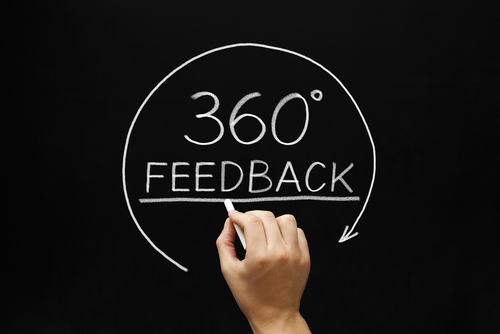Is it time to revisit 360 feedback evaluations for the remote workplace?
360 feedback, or 360-degree feedback, as the name suggests, involves soliciting feedback not just from an employee’s direct supervisor (i.e., feedback from above) but also from all around the employee—360 degrees of interaction. That means feedback from subordinates, team members, and colleagues who work with the employee cross-functionally from other departments. 360 feedback could even be used with customers and external stakeholders to some extent.
A Renewed Look at the 360
360 feedback may be ripe for a new moment because of the widespread shift to remote work in the wake of the COVID-19 pandemic and the associated limitations on workplace communication.
While telecommunications technologies have come a long way in recent years, there’s still no perfect substitute for in-person interactions. So much communication, including nonverbal cues and informal office chatter, can be lost during remote work. This means employees may not get the full picture of how their performance impacts everyone they interact with. 360 feedback can help address this by soliciting feedback from a variety of stakeholders, not just a direct superior.
360 Feedback in Action
For example, employees in the finance department might get feedback from a colleague they work with on the accounting team. That feedback might reveal, for instance, that the finance employees could be more responsive. In a traditional office setting, that feedback might make its way to an employee’s manager through hallway or watercooler chatting with colleagues or some other informal means of communication.
Today, though, with so many workers still missing out on the value of informal discussions, there’s a strong argument to encourage those discussions through more formal channels, such as a 360-degree feedback review.
Lin Grensing-Pophal is a Contributing Editor at HR Daily Advisor.

